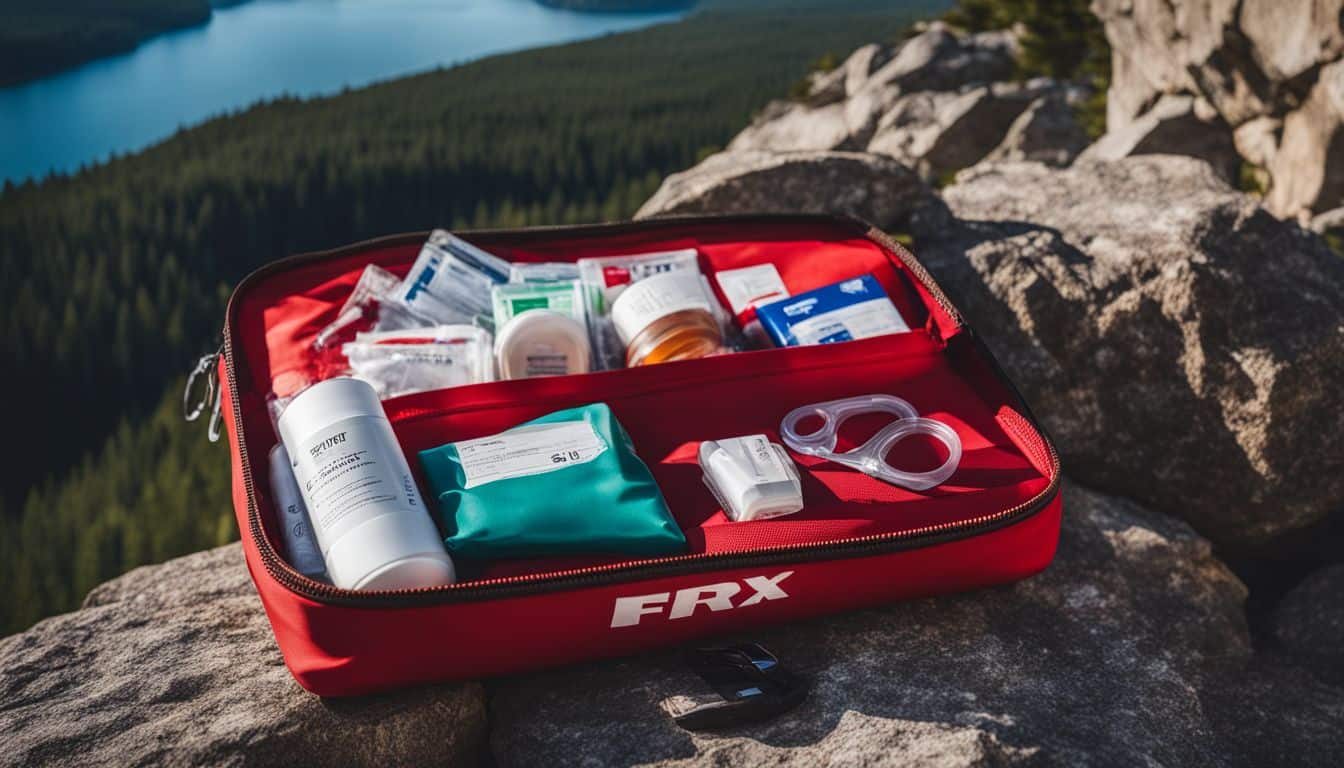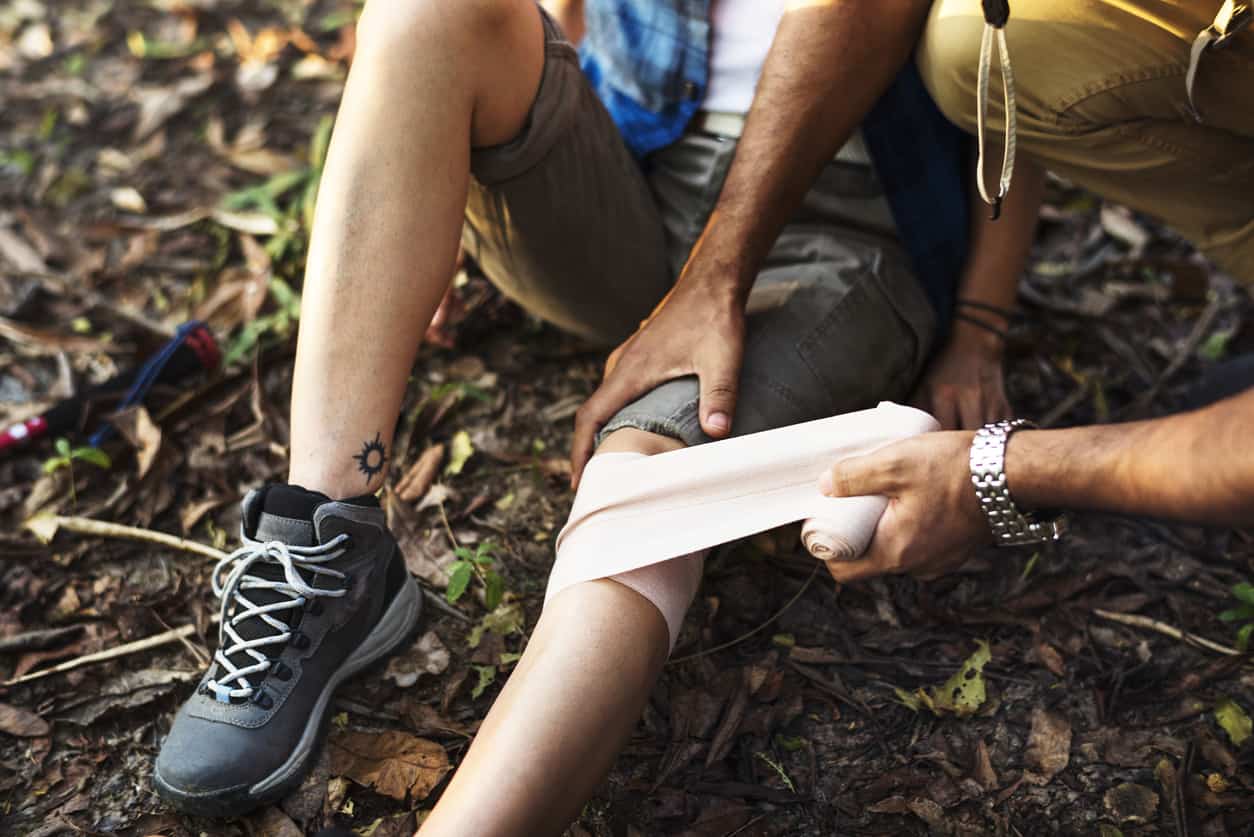Dispersed camping offers a unique opportunity to experience nature in its raw form, but it also comes with increased risks. Being prepared for emergencies is crucial for a safe and enjoyable experience. Here’s how to handle potential emergencies while dispersed camping:
Preparation is Key
- Research the Area: Familiarize yourself with the terrain, potential hazards, and nearest emergency services.
- Pack an Extensive First Aid Kit: Include items for treating common injuries, allergic reactions, and pre-existing conditions.
- Bring Extra Supplies: Pack food, water, and essential gear for at least twice your planned stay.
- Emergency Communication Devices: Carry a satellite phone or personal locator beacon for areas without cell service.
Thorough preparation is the foundation of a safe dispersed camping experience. Researching the area helps you anticipate challenges and plan accordingly. This includes understanding the local wildlife, weather patterns, and any area-specific risks.
A comprehensive first aid kit should be tailored to your group’s needs and the potential hazards of your destination. Extra supplies provide a crucial safety buffer in case of unexpected delays or emergencies. Emergency communication devices are essential lifelines in remote areas, potentially making the difference between a manageable situation and a life-threatening one.
Before embarking on your trip, make sure you’re familiar with dispersed camping etiquette to ensure you’re camping responsibly and safely.

Common Emergencies and How to Handle Them
Weather-Related Emergencies
- Hypothermia:
- Symptoms: Shivering, confusion, loss of coordination
- Action: Remove wet clothing, provide warm drinks, and use body heat to warm the person
- Heat Exhaustion:
- Symptoms: Heavy sweating, dizziness, headache
- Action: Move to a cool area, provide water, and apply cool compresses
Weather-related emergencies can occur rapidly in outdoor settings. Hypothermia is a serious risk, even in mild temperatures if a person becomes wet or chilled. Recognizing early symptoms is crucial for effective treatment. Heat exhaustion, on the other hand, can quickly escalate to heat stroke if not addressed promptly. In both cases, prevention through proper clothing, hydration, and awareness of weather conditions is key.
Injuries
- Sprains or Fractures:
- Immobilize the affected area
- Apply cold compresses to reduce swelling
- Seek medical attention if severe
- Cuts and Abrasions:
- Clean the wound thoroughly
- Apply antibiotic ointment and cover with a sterile bandage
Injuries are common in outdoor activities. Proper treatment of sprains and fractures can prevent further damage and alleviate pain. For cuts and abrasions, thorough cleaning is crucial to prevent infection in the backcountry. Always monitor injuries for signs of infection or complications, especially when medical help is not readily available.
Wildlife Encounters
- Bear Encounters:
- Make noise to avoid surprising bears
- If encountered, speak calmly and back away slowly
- Use bear spray if attacked
- Snake Bites:
- Keep the victim calm and immobilize the affected limb
- Seek immediate medical attention
Wildlife encounters require calm and informed responses. With bears, prevention through proper food storage and noise-making while hiking is ideal. If an encounter occurs, remaining calm and avoiding sudden movements is crucial. For snake bites, it’s important to identify the snake if possible, but prioritize getting medical help over pursuing the snake. In all wildlife encounters, respecting animals’ space and behaving appropriately can prevent many dangerous situations.
https://www.youtube.com/watch?v=a3og_MCclB8
Navigation Emergencies
- Always carry a physical map and compass as backup
- Mark your campsite location on your GPS or map
- If lost, stay put and signal for help
Navigation emergencies can occur even with modern GPS devices. A physical map and compass are reliable backups that don’t require batteries. Marking your campsite location helps you find your way back and provides a reference point if you need to communicate your location to rescuers. If you become lost, staying in one place conserves energy and makes it easier for search parties to find you. Practice navigation skills before your trip to build confidence in using these tools.
Vehicle Emergencies
- Carry basic repair tools and know how to use them
- Bring extra fuel and a spare tire
- Have a plan for if your vehicle becomes stuck or breaks down
Vehicle emergencies in remote areas can quickly become serious. Basic repair tools and the knowledge to use them can solve many minor issues. Extra fuel extends your range and provides a safety margin. A full-size spare tire is crucial for rough roads. Have a plan for worst-case scenarios, such as a vehicle that won’t start or gets stuck. This might include having a way to call for help or knowing the nearest location where you can walk to get assistance.
Fire Safety
- Check local fire regulations before starting any fire
- Keep fires small and fully extinguish them before leaving
- Have a plan to quickly evacuate in case of wildfire
Fire safety is critical in dispersed camping areas where wildfires can spread rapidly. Always check current fire regulations, as these can change based on conditions. When fires are allowed, keep them small and manageable. Fully extinguishing fires is crucial – douse with water, stir the ashes, and repeat until cold to the touch. Have an evacuation plan in case of wildfire, including multiple routes out of the area and a clear idea of the nearest safe zones.
Water Safety
- Purify all water before drinking, even if it looks clean
- Be cautious around fast-moving streams or rivers
- Know the signs of water-borne illnesses
Water safety involves both avoiding physical dangers and ensuring drinking water is safe. All natural water sources should be treated before consumption, regardless of how clean they appear. Be extremely cautious around water bodies, especially in spring when levels can be high and currents strong. Recognize symptoms of water-borne illnesses like giardia, which can include nausea, cramps, and diarrhea.
For more information on sourcing and managing water, check out our guide on finding water while dispersed camping.

Creating an Emergency Plan
- Share your itinerary with a trusted person not on the trip
- Establish check-in times and procedures
- Agree on a meeting point in case group members get separated
An emergency plan is crucial for dispersed camping safety. Sharing your itinerary ensures someone knows where to look if you don’t return as planned. Regular check-ins provide peace of mind and a system for raising alarms if needed. A predetermined meeting point can be lifesaving if group members get separated. Your emergency plan should be detailed and account for various scenarios you might encounter.
Emergency Signaling
- Learn how to signal for help using mirrors, whistles, or ground signals
- Carry brightly colored clothing or tarps to increase visibility
Knowing how to signal for help can be crucial in emergency situations. A signal mirror can be seen for miles in sunny conditions. Whistles carry farther than the human voice and require less energy. Ground signals, like SOS spelled out with rocks or branches, can be spotted by air searchers. Bright clothing or tarps make you more visible in dense forest or against snow. Practice using these signaling methods before your trip.
Mental Preparedness
- Stay calm in emergency situations
- Make rational decisions based on your resources and situation
- Prioritize immediate survival needs: shelter, water, food, and signaling for help
Mental preparedness is often overlooked but is crucial in emergencies. Staying calm allows you to assess the situation rationally and make better decisions. Prioritize your immediate needs: shelter from the elements, finding water, conserving food, and signaling for help. Remember that in most situations, rescuers will be looking for you, so focusing on survival and making yourself visible or audible to searchers is key. Mental resilience can often make the difference between a manageable situation and a life-threatening one.
Conclusion
While dispersed camping offers unparalleled freedom and connection with nature, it also requires a high level of self-reliance and preparedness. By anticipating potential emergencies and knowing how to handle them, you can enjoy the wilderness safely and responsibly. Remember, the key to surviving any emergency is to stay calm, use your resources wisely, and make informed decisions based on your situation.
For more information on how to prepare for different seasons, check out our guide on seasonal dispersed camping. And don’t forget to review our recommendations for gear for dispersed camping to ensure you’re well-equipped for any situation.

Leave a Reply